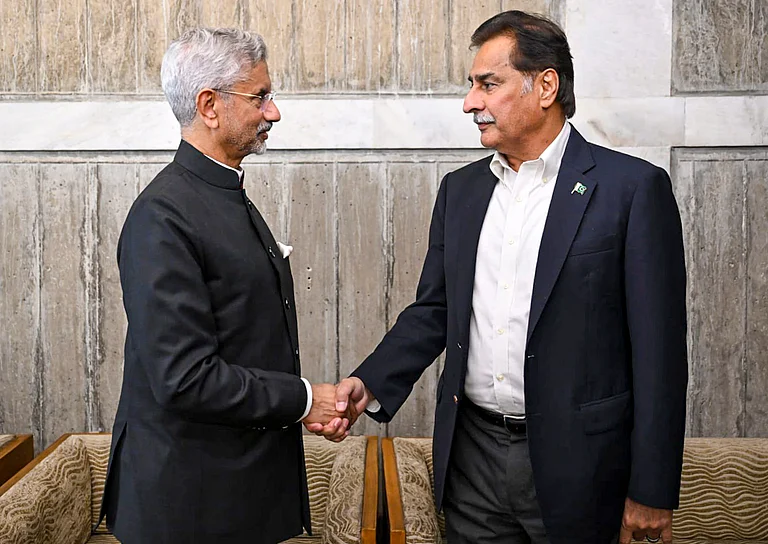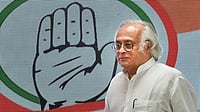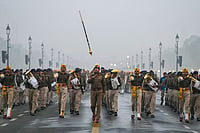It took 20 years for the Canadian government to acknowledge that the July 23, 1985 Air India Kanishka (Flight 182) bombing that snuffed out 329 lives was a national tragedy. Till then, it was considered as an Indian problem “tied to alleged grievances rooted in India and Indian politics”. It was not even acknowledged as a “terrorist act” although it had killed 268 Canadian nationals. It was only on May 1, 2006 that a commission of enquiry under former Justice John C. Major was appointed to probe failures by government agencies in preventing this mass murder. This delay led to allegations of “racism” in handling this grave issue. It took another four years for Commissioner Major to submit his report listing the glaring failures by Canadian government agencies. He rejected charges of racism, but remarked that “both the Government and the Canadian public were slow to recognize the bombing of Flight 182 as a Canadian issue”.
Are we now seeing a rerun of the same trend in Canada with a reverse dynamics of patronising militant Sikhs due to electoral compulsions? Jagmeet Singh of New Democratic Party (NDP), the first non-White to be elected as a national party leader, is canvassing support for the “Khalistan 2020 Referendum” idea put across by Sikhs for Justice (SFJ). He is also seen refusing to criticise some Canadian Gurudwaras that are exhibiting portraits of Indrajeet Singh Reyat, the convicted Kanishka bomber. On October 19, 2017 the Canadian Globe & Mail ran a story underlining Jagmeet’s “support for the creation of a theocratic Sikh state” and his “veneration” of Talwinder Singh Parmar, the prime suspect in Kanishka bombing. The paper said that this was his electoral ploy on a subject “that bitterly divides the Sikh Community in Canada….Many Canadian Sikhs (many of whom undoubtedly supported Mr. Singh’s leadership bid) hold militant views”. And it is the same Jagmeet who is being seen by Washington Post (August 24, 2017) to “Out Trudeau Justin Trudeau” in the 2019 elections.
So, why is the Khalistan movement able to sustain itself abroad when it has lost its steam in India? Therese Suhashini Gunawardena, a scholar at University of Texas (Austin), calls this phenomenon as “separatist diasporian movement” (SDM). She says all such SDMs try to maintain the momentum even in the absence of support from their corresponding home ethnic segment due to “strong material and emotional ties to their lands of origin”. Like the American Jews who strengthened the pre-Independence Zionist movement in Israel, they do this through arms, money and political activities in their host countries. Gunawardena, who had published an illuminating study on Khalistan in 2001, feels that the original catalyst for the “separatist” or “superior” feelings among the Sikhs was the British Colonial administration itself.
She quotes Harry Goulbourne (Race Relations in Britain Since 1945) saying that the British Raj strove to cultivate “special relationships with certain groups of her multi-ethnic, multi-linguistic, and multi-religious subjects as part of broader colonial policy”. This they did, by giving more privileges to certain groups while denying it to others. They thereby intentionally exploited “longstanding pre-colonial divisions in some cases and created new ethnic rifts in others”. For example for army recruitment they defined the category “Sikh” to mean a Khalsa Sikh. The British “did not merely encourage the observance of the five “Ks” by Sikh soldiers, but compelled them to conform to the Khalsa code”. Several Sikh contingents were detailed in Burma, Hong Kong, Malaya, China, East Africa and other areas of Southeast Asia to protect British imperial interests. This spurred Sikh emigration and subsequent settlement in various far-flung places within the British Empire. Gunawardena quotes Darshansingh Tatla (The Sikh Diaspora: The Search for Statehood) that “the Sikh migration during this initial early phase was thus directly linked to British colonial military policy”.
The Diaspora migrated in large numbers to Canada as well as the US when these countries relaxed their previous exclusionary immigration policies. In the United Kingdom, they enjoyed a powerful voice and attentive audience on issues pertaining to their homeland in view of their special historical relationship and the size of the current Sikh population.
As a result, Khalistan activities are increasing abroad. The fulcrums of activities are in Canada, UK and Europe. The effects are felt in Punjab. Along with this, intelligence on a fresh Khalistan- Radical Islamist axis catalysed by Pakistan is being received. Our intelligence agencies have already forewarned on this emerging axis. This was confirmed in the Rajya Sabha by our minister of state for home on December 27 last year. Political killings in Punjab and arrests of foreign-based Sikhs, including Jagtar Singh Johal, are indicators.
We should not underestimate the Khalistan-Lashkar-e-Taiba alliance being cobbled up by Pakistan. In 1991-92, we escaped by a whisker the possible ravages of a similar Khalistan-SIMI axis grafted by Pakistan. This will be apparent if we study the Supreme Court judgment in 2001(1) Crimes 115(SC) Lal Singh etc Vs State of Gujarat. A SIMI convention was held in Bombay in 1991, during which active SIMI activist C.A.M.Basheer, an aeronautical engineer from Kerala, succeeded in organising this tie-up. As a result: Toronto-based Khalistani activist Lal Singh entered India on December 11 that year with a bogus Pakistani passport as “Choudhri Mohammad Iqbal”. He was accompanied by an ISI operative, Mohammad Sharief, whose passport name was Manzoor Ahmed. Although their visas permitted them to visit only Bombay and Calcutta, they happily travelled all over India for six months, meeting co-conspirators, storing arms and explosives, hiring safe houses and organising a ‘recce’ of Madras Stock Exchange (MSE) building that they wanted to blow up.
This period coincided with the post-Babri Masjid demolition riots in Bombay (December 1992-January 1993) and the Bombay serial blasts of March 12, 1993. The judgment reveals glaring gaps in our intelligence sharing. Lal Singh, who was arrested by chance on July 16, 1992 by Bombay Railway Police on suspicion, would have been released had not Gujarat Police (Baroda Commissioner of Police Hiralal) intervened. The judgment reveals that Dadar Police had submitted final report in RCS/92 as “No case is made out”. Why did the IB or MHA fail to inform Bombay Police earlier that one Khalistani “Inder Pal Singh” alias Lal Singh was operating from Gujarat, which they knew? With Gujarat Police’s intervention, the other conspirator Mohammad Sharief was arrested on June 18, 1993. The CBI took over the investigation on August 4, 1992.
However it was astonishing that the CBI which took over investigation on August 4, 1992 did not reveal anything to the then Bombay Police Commissioner about Lal Singh’s intention of blowing up MSE. The late A.S.Samra, the then commissioner, had blamed LTTE as the initial suspect on March 14, 1993 after Dawood’s serial Bombay blasts on March 12, 1993 which included Bombay Stock Exchange also. Would the Bombay Police have suspected the LTTE in March 1993 had they been privy to Lal Singh’s plans of bombing MSE the previous year? This raises another question: why were the CBI, which had taken over Lal Singh’s investigation in August 1992, and the IB, which must have pursued the investigation, unable to detect a brewing parallel conspiracy to cause serious blasts in March next year in Bombay after Lal Singh had spilled the beans in July 1992 (leading to recoveries of arms dump in Gujarat)? Both were planned by Pakistan on a similar modus operandi.
Pakistani intelligence would have planned such blasts on parallel tracks much earlier, one using Lal Singh and the other by Dawood for similar targets for which advance planning was required. While Bombay conspiracy worked, the other by Lal Singh aborted through the chance good work by Bombay/Gujarat Police. This case study of this incident would thus indicate that we need to be much more vigilant on the possibility of the present Khalistan-Lashkar axis.
(The writer is a former special secretary, Cabinet Secretariat. His latest book is Keeping India Safe: The Dilemma of Internal Security.)


























